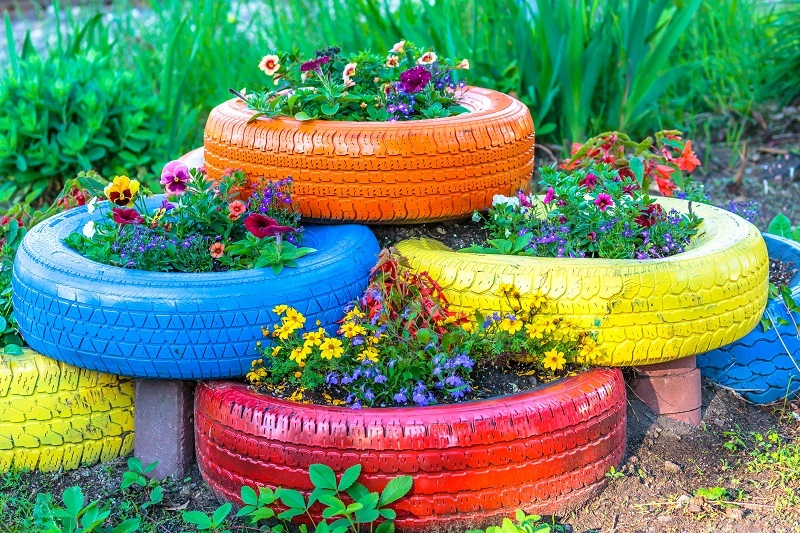The Art of Orchids: An In-Depth Care Guide
Posted on 17/08/2025
The Art of Orchids: An In-Depth Care Guide
Orchids have left admirers spellbound for centuries with their mesmerizing beauty, exquisite shapes, and alluring scents. Cultivating these exotic beauties can be both thrilling and daunting. In this comprehensive orchid care guide, we'll delve deep into the art of orchids, sharing practical tips on how to nurture, maintain, and help these unique plants thrive. Whether you are a novice plant parent or a seasoned horticulturist, this guide will illuminate every aspect of orchid care for enduring success.
Understanding the Orchid: Diversity and Allure
Orchids belong to the Orchidaceae family, one of the largest and most diverse of all plant families, boasting over 25,000 species and 100,000 hybrids. Their astonishing forms and vivid colors captivate enthusiasts worldwide. Some varieties even produce fragrances that are highly sought after in the perfume industry.
Popular Orchid Types to Know
- Phalaenopsis (Moth Orchid) - Ideal for beginners, valued for their long-lasting blooms and easy care.
- Cattleya - Known as the "Queen of Orchids," prized for their impressive size and delightful fragrance.
- Dendrobium - Featuring slender canes and vibrant blossoms, they offer diversity in growth habits.
- Oncidium - Often called "dancing ladies orchids," recognized for profuse flowering.
- Vanda - Vibrant, showy, and often grown in hanging baskets to showcase their aerial roots.
Each orchid type has different needs, but most varieties can thrive indoors when given appropriate attention. Focusing on the basics of orchid plant care is the key to unlocking their full potential.

The Fundamentals of Orchid Care: Mastering the Basics
Light: Balancing Shade and Sun
The secret to thriving orchids is providing the right amount of light. Orchids require bright, indirect sunlight; too much direct sun may scorch leaves, while inadequate light can stunt growth and flowering.
- Place orchids near east or south-facing windows filtered by sheer curtains.
- Observe leaf color - healthy foliage should appear light green. Dark green leaves may signal insufficient light.
- During winter, supplement with an artificial grow light if necessary.
Temperature and Humidity: Mimicking Native Habitats
Orchids flourish in temperatures similar to those found in their tropical homelands. Typically, this means:
- Daytime temperatures of 65?F to 80?F (18?C-27?C).
- Nighttime temperatures about 10?F cooler (8?C-10?C lower).
- Maintain humidity between 50% and 70%. Using a humidity tray or room humidifier can help.
Proper ventilation is essential--orchids despise stagnant air! Use a fan or open window for fresh breezes, keeping leaves dry and healthy.
Watering Orchids: A Delicate Dance
Learning how to water orchids properly is crucial to their care. Overwatering is a leading cause of root rot, yet under-watering can make plants shrivel. Follow these essential tips:
- Water when the potting mix becomes almost dry to the touch--usually once a week for most varieties.
- Use room-temperature, distilled, or rainwater. Avoid softened or fluoride-treated water.
- Water thoroughly, allowing excess to drain. Never let the orchid sit in standing water.
- Lessen frequency during dormancy or winter months.
Potting Media and Repotting
Unlike traditional houseplants, orchids often grow in loose, chunky media instead of soil. Common options include:
- Bark chips - Excellent drainage, suitable for most orchids.
- Sphagnum moss - Retains moisture but can compact over time.
- Charcoal, perlite, or coconut husks - Often added to improve aeration and minimize compaction.
Repot your orchid every 1-2 years, preferably after flowering. Remove old, degraded mix and trim away any dead roots, then repot in fresh medium to encourage healthy growth.
Feeding and Orchid Fertilization
Orchids are light feeders, but they benefit from a balanced, water-soluble orchid fertilizer ("weakly, weekly" is the mantra):
- Use a balanced 20-20-20 orchid fertilizer at quarter strength.
- Fertilize every two to four weeks during active growth, less during dormant periods.
- Flush the potting media with pure water monthly to prevent salt buildup.
Advanced Orchid Care Tips: Troubleshooting and Flowering
Promoting Flowering: Orchids in Bloom
One of the most rewarding aspects of orchid cultivation is coaxing out their spectacular blooms. If your orchid isn't flowering, address these common causes:
- Light: Increase filtered sunlight or use grow lights.
- Temperature drops: Some orchids need cooler nights to trigger flowering.
- Feeding schedule: Fertilize appropriately during the growth cycle.
- Ensure the orchid isn't root-bound or in decomposing media.
With patience, even stubborn orchids can be persuaded to rebloom each year, providing months of vibrant color and joy.
Common Problems and Solutions
New orchid enthusiasts often worry about leaf discoloration, pests, or failed blooms. Identifying issues early is key:
- Yellow leaves: Usually due to overwatering or too much light.
- Wrinkled leaves: Often a sign of dehydration or root issues.
- Brown leaf tips: Can signal low humidity or fertilizer burn.
- Pests like mealybugs, scale, and spider mites: Treat with insecticidal soap or neem oil, and increase humidity.
- Leaf spots or rot: Remove affected leaves, repot, and improve airflow.
Prevention is always best--strong, healthy orchids resist most challenges.
Specialized Care for Different Orchid Varieties
While most orchid care principles are universal, some species have unique requirements. Let's spotlight specific needs:
Phalaenopsis Orchid Care
- Low to moderate light - ideal for windowsills.
- Enjoys household temperatures and humidity.
- Large, flat roots are susceptible to rot--use a transparent pot for root monitoring.
Dendrobium Orchid Care
- Bright, indirect sunlight is crucial.
- Reduce watering during winter dormancy.
- Likes to be slightly root-bound - avoid oversized pots.
Cattleya Orchid Care
- Thrives in very bright conditions, even tolerates a bit of direct morning sun.
- Needs good air movement to prevent rot on thick pseudobulbs.
- Let potting mix dry slightly between waterings.
Oncidium & Vanda Orchid Tips
- Oncidium: Appreciate high humidity and benefit from mounted or hanging display.
- Vanda: Require daily misting or submersion and very bright light for best results.
Creative Ways to Display Orchids at Home
Showcasing your orchids can elevate any interior space, combining living art with interior design. For an eye-catching display, try:
- Orchid Terrariums: Group miniature orchids in glass bowls for a tropical feel.
- Hanging Baskets: Perfect for Vanda and intricate vandaceous hybrids.
- Window Sills: East-facing windows offer ideal filtered sunlight for phalaenopsis orchids.
- Living Wall Panels: Attach orchids to cork bark or driftwood for a lush, vertical garden effect.
Be sure that your decorative choices never compromise light, airflow, or watering ease. The art of orchid display is about balancing aesthetics and plant health.
Orchid Myths Debunked: Facts Every Grower Should Know
- Myth: "Orchids are impossible to grow indoors."
Fact: With the right care, many orchids adapt beautifully to home conditions. - Myth: "All orchids require the same care."
Fact: Each genus has slightly different watering, light, and feeding preferences. - Myth: "Orchids only bloom once."
Fact: Properly maintained orchids can rebloom for years! - Myth: "Orchids need to be watered daily."
Fact: Overwatering is harmful; most orchids enjoy drying out between waterings.

Conclusion: The Joy of Mastering Orchid Plant Care
Mastering the art of orchids is a journey filled with beauty and discovery. These exquisite blooms reward patience, attention, and curiosity. By following the fundamental tips outlined in this orchid care guide, even beginners can build confidence and skill. The more you observe your plants and adjust to their unique rhythms, the greater your success will be.
Whether you're nurturing your first phalaenopsis orchid or cultivating a varied collection, remember that every orchid tells its own story. Embrace the process, take pride in every new leaf and bloom, and share the joy of orchid growing with fellow enthusiasts. Happy cultivating!
Frequently Asked Questions (FAQ) - Orchid Care
- How do I get my orchid to flower again?
Ensure proper light, maintain temperature drops at night, use orchid fertilizer, and cut back stems after flowering to encourage new spikes. - Can orchids be grown outdoors?
Many orchids flourish outdoors in mild, frost-free climates in filtered shade, but must be brought indoors before cold weather arrives. - How often should I repot my orchid?
Every 1-2 years or when the potting mix breaks down. Orchids need fresh, airy media to thrive. - What is the best way to water orchids?
Water thoroughly when the potting mix is almost dry. Allow water to drain completely and avoid wet leaves. - Are orchids poisonous to pets?
Most common houseplant orchids, like phalaenopsis, are non-toxic to cats and dogs, but always verify the species you own.
Latest Posts
Simple strategies to prolong the freshness of your flowers
The Art of Orchids: An In-Depth Care Guide
Top 10 Office Plants That Need Little Attention
Celebrate Every Month with Nature's Birth Month Blooms
Nurture Your Poinsettias to Ensure They Brighten Your Home Longer





